#Kazunori Itō
Text
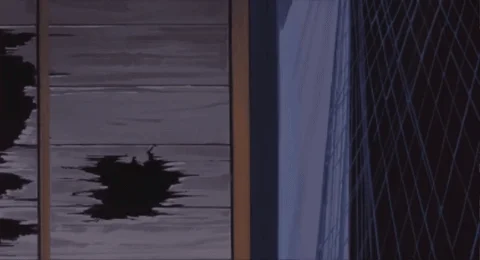
#patlabor: the movie#patlabor#mecha#Mamoru Oshii#Kazunori Itō#studio deen#production ig#anime#80s anime
6 notes
·
View notes
Text


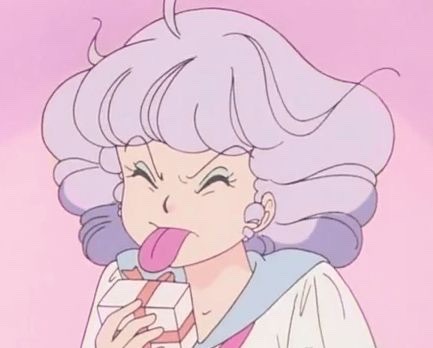
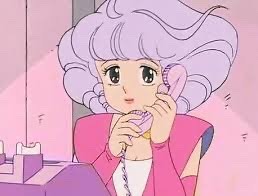

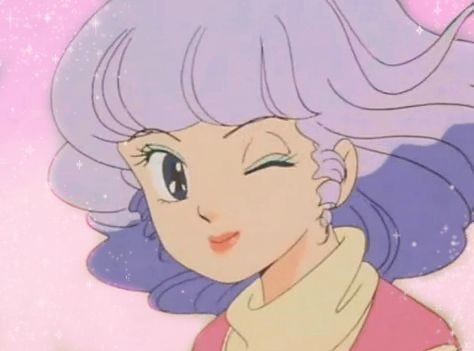
Creamy Mami
Creamy Mami, the Magic Angel (1983)
1 note
·
View note
Text
Urusei Yatsura Season 2 Episode 21: And Then There was Nobody!?
Written by Kazunori Itō
Storyboarded and animation directed by Kazuo Yamazaki
Directed by Junji Nishimura

2 notes
·
View notes
Text
0 notes
Text
THE NECRONOMICON in H. P. LOVECRAFT.
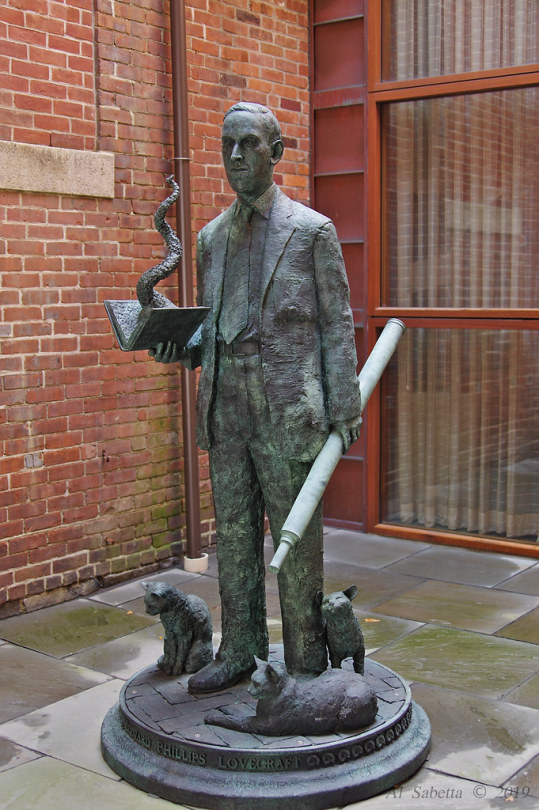
H.P. Lovecraft statue in Providence, RI sculpted by artist Gage Prentiss. Photo taken by David Lepage (OLYMPUS DIGITAL CAMERA) shortly after the statue was unveiled online. A place has yet to be determined for the permanent installation of the statue in Providence.

Who is this scary dude that seems to have come out of the New England witchery subterranean hell. He is certainly crafty and don't know about him being a lover, particularly in his writings, well, I'll leave you to decide.
I am going to deal with H. P. Lovecraft "Necronomicon", a fictional grimoire (meaning a textbook of magic) which has been featured it in many of his stories. So wish me good luck with that.
About this New-Englander Howard Phillips Lovecraft (August 20, 1890 – March 15, 1937), he was an American writer of weird, science, fantasy, and horror fiction. He is best known for his creation of the Cthulhu Mythos. I would suggest further reading at H. P. Lovecraft - Wikipedia
youtube
(679VID1) https://youtu.be/Ll67gXlC6qE
The Necronomicon, also referred to as the Book of the Dead, or under a purported original Arabic title of Kitab al-Azif, is a fictional grimoire (textbook of magic) appearing in stories by the horror writer H. P. Lovecraft and his followers. It was first mentioned in Lovecraft's 1924 short story "The Hound", written in 1922, though its purported author, the "Mad Arab" Abdul Alhazred, had been quoted a year earlier in Lovecraft's "The Nameless City". Among other things, the work contains an account of the Old Ones, their history, and the means for summoning them.
READ MORE: Necronomicon - Wikipedia

To make a long story short, I've included the following movie. (IMdB rating 5'8)
Necronomicon (also called H. P. Lovecraft's Necronomicon, Necronomicon: Book of the Dead or Necronomicon: To Hell and Back) is a 1993 French-American anthology horror film. It features three distinct segments and a wraparound directed by Brian Yuzna, Christophe Gans and Shusuke Kaneko and written by Gans, Yuzna, Brent V. Friedman and Kazunori Itō. The extensive special makeup and animatronic effects were supervised by Tom Savini[1] and were created by John Carl Buechler, Christopher Nelson and Screaming Mad George.
The three stories are based on three works by famed horror writer H. P. Lovecraft: "The Drowned" has light similarities to aspects of the short story "The Rats in the Walls", "The Cold" is based on the short story "Cool Air", and "Whispers" is based on the novella The Whisperer in Darkness. Read more: Necronomicon (film) - Wikipedia Necronomicon: Book of Dead (1993) - IMDb
(679VID2) https://ok.ru/video/1677493209656
REF: 679 NOTES
History of the Necronomicon - Wikipedia
Necronomicon - Wikipedia
Necronomicon (film) - Wikipedia
THE NECROMOMICON - An immersive film and audio book experience.
Altrusian Grace Media presents THE NECRONOMICON - an immersive film and audio book experience. Inspired by and referenced in the literary works of H. P. Lovecraft, the Necronomicon is the infamous Book of the Dead. The Necronomicon, also referred to as the Book of the Dead, or under a purported original Arabic title of Kitab al-Azif, is a fictional grimoire (textbook of magic) appearing in stories by the horror writer H. P. Lovecraft and his followers. It was first mentioned in Lovecraft's 1924 short story "The Hound", written in 1922, though its purported author, the "Mad Arab" Abdul Alhazred, had been quoted a year earlier in Lovecraft's "The Nameless City". Among other things, the work contains an account of the Old Ones, their history, and the means for summoning them. Download the audio version at https://altrusiangrace.bandcamp.com/a... Narrated by Matthew Schmitz
youtube
(679vid3) https://youtu.be/RGi4ACLePGw THE NECRONOMICON - an immersive film and audio book experience
THE FILM WITH SPANISH SUBTITLES...
(679vid4) https://ok.ru/video/85548272194 Necronomicon: Book of the Dead (1993) - VIAJE A LO INESPERADO
See the book in PDF...
Al-Azif-Necronomicon.pdf (holybooks.com)
1 note
·
View note
Text
Ghost in the Shell
Ghost in the Shell
Benvenuti o bentornati sul nostro blog. Negli ultimi articoli mi sono concentrato molto su dei veri e propri cult della Disney: abbiamo parlato di Pinocchio, una pellicola tecnicamente incredibile che fece fare un balzo di qualità nell’animazione e viene tuttora considerata come uno dei film tecnicamente migliori della Disney. Nello scorso articolo poi abbiamo discusso di Fantasia, uno dei…

View On WordPress
#Akio Ōtsuka#Atsuko Tanaka#Batou#cel animation#cyberpunk#Daisuke Aramaki#DGA#Fantascienza#film#Ghost in the Shell#Ishikawa#Kazunori Itō#Ken Iyadomi#Ken Matsumoto#Kōichi Yamadera#Kōkaku kidōtai#lens flare#Mamoru Oshii#Masamune Shirow#Mitsuhisa Ishikawa#Motoko Kusanagi#Progetto 2501#Recensione#Recensione film#rodovetro#rōmaji#sci-fi#Seichi Tanake#Tamio Ōki#Togusa
24 notes
·
View notes
Photo
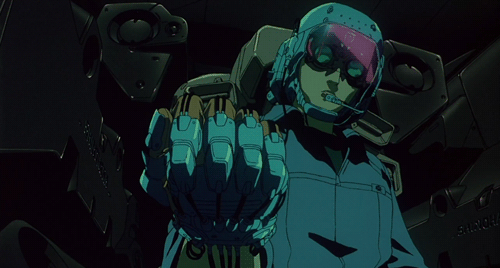
#Patlabor 2: The Movie#animation#movie#cinema#anime#Mamoru Oshii#Production I.G#Bandai Visual#Tohokushinsha#Kazunori Itō#Kenji Kawai#gif
36 notes
·
View notes
Text
.hack//G.U. Last Recode American Physical Release Announced
.hack//G.U. Last Recode American Physical Release Announced
Bandai Namco Entertainment has announced that they will be releasing physical release copies of .hack//G.U. Last Recode in North America. For those who aren’t aware .hack//G.U. Last Recode is a HD remaster compilation of the three .hack//G.U. games titled, Rebirth, Reminisce, and Redemption.
Here is the official announcement details released by Bandai Namco.
BANDAI NAMCO Entertainment America…
View On WordPress
#.hack//G.U. Last Recode#.hack//G.U. Vol. 1: Rebirth#.hack//G.U. Vol. 2: Reminisce#.hack//G.U. Vol. 3: Redemption#15th Anniversary#Bandai Namco#Bandai Namco Entertainment#Bandai Namco Entertainment America#Chikayo Fukuda#CyberConnect2#Darkon633#Gaming#Hero Club#Hiroshi Matsuyama#Kazunori Itō#Microsoft#Miu Kawasaki#PC#Playstation 4#PS4#Seiichiro Hosokawa#Sony#Steam#Tatsuya Hamazaki#Yoshiyuki Sadamoto
4 notes
·
View notes
Photo

Creamy Mami (1983) by Itō Kazunori
113 notes
·
View notes
Text
Animation Night 38: Mamoru Oshii
Hey there friends! It’s time for Animation Night again. Still not gotten round to filling in last week’s Lupin post, but it’ll come. Anyway...
Well, the last many months, we’ve been working our way down the list of big name anime auteurs - and it’s time for this guy!

Mamoru Oshii is surely best known for his famous film adaptation of Masamune Shirow’s Ghost in the Shell, but that’s actually something I’m gonna be saving for next week when we’ll be doing a dive (off the rooftops) into that franchise. Instead, this week I want to share some of Oshii’s various other films, bc they can be quite a mood!
So, from the top! It probably explains a lot to note that Oshii grew up watching a lot of artsy European films by people like “Federico Fellini, Ingmar Bergman, Michelangelo Antonioni and Jean-Pierre Melville” (thanks WP). He went into anime storyboarding pretty much straight out of uni in the 70s, working on fairly minor baseball anime; the break came in 1981 where he joined Studio Pierrot to work on the scifi romcom series Urusei Yatsura, especially the second film where he started to indulge in time loop plots and pouring the philosophy juice.
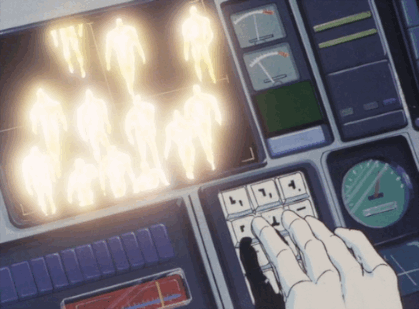
While scifi movies would turn out to be the niche that best suited Oshii, his first step away from TV anime was to try a new format for anime: Dallos (1983-4) was the very first OVA, which is startling considering how quickly the format took off by the end of the 80s. You can read someone’s very detailed plot summary here; according to that guy, it was left frustratingly unfinished after four episodes, and the story wasn’t a great deal to write home about, hence largely forgotten beyond the ‘first OVA’ footnote.
Oshii, meanwhile, had a much more exciting plan - he was planning a Lupin III film. From the sounds of things, what he had in mind was a sort of cyborg-filled, GitS-like take on Lupin, but the premise was too weird for Tōhō and Yomiuri; having heavily advertised Oshii as the director (I guess he was already a ~marketable name~ back then?) they decided to just cancel the film! Tragic honestly, I’d love to see an Oshii take on Lupin, that would be fucking wild.

Oshii took the ideas with him, and instead went ahead to direct one of his first really personal films: Angel’s Egg, at Studio Deen (not one familiar to me, but they seem to be a v long running studio who’ve worked on quite a bit of high profile stuff including Ranma, the first Fate anime, and the Higurashi/Umineko adaptations).
This is where we hit the art, or if you prefer, vibes, that Oshii is known for! Angel’s Egg is almost wordless, full of surreal, frequently biblical imagery and gorgeous Yoshitaka Amano character design. The plot is kind of abstract, but broadly, a soldier boy is wandering a strange empty land where armies fight shadow fishes; one day he encounters a girl with a giant egg, who asks him not to break it... and the egg remains totally fine and definitely does not get broken at some later point in the film no way 🙃

Oshii had grown up Christian, but while making this film, he became disillusioned with his religion, and well it’s not a stretch to see that getting metaphorised in the film! But while this is the usual angle taken by critics, Oshii has himself refused to give a specific interpretation of the film. In any case, here we see the onset of certain images that would recur throughout Oshii’s films: fossils and extinct animals, military imagery of soldiers locked into aimless tasks...
Following Angel’s Egg, whose producer Toshio Suzuki was among the founders of Ghibli, Oshii briefly collaborated with Miyazaki and Takahata towards a film that would be called Anchor, only to fall out over some kind of vague creative differences. Instead, it was time for the ‘militarised police force’ era of Oshii’s career!
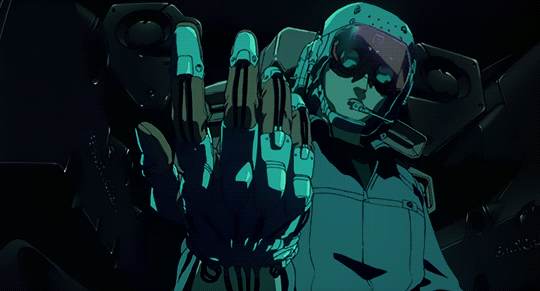
Joining a small creative collective called Headgear at the invitation of his friend, screenwriter Kazunori Itō, Oshii would spend the next few years on two parallel strands: the extremely down-to-earth mecha series Patlabor, imagining the cops of a near-future setting where mechas are ubiquitous and not always reliable; and the mostly live-action Kerberos series, which grimly imagines a future where Japan went full fash again, creating a specialist police force in blatantly SS-inspired gear who end up going rogue.
I’ve seen the first Patlabor film some time ago, and a lot of it is like, squad room shenanigans, though it has some very impressive action scenes at the end on a collapsing artificial island. We can certainly trace some of its influences to events at the time - like with Akira, there is for example the Tokyo housing bubble taking place in the 80s, which is in the film transformed into literal hopeless attempts to construct artificial islands. Machinery runs amok in civilian neighbourhoods, etc. etc. It saw the beginning of Oshii’s long collaboration with composer Kenji Kawai, though not yet at the heights of his GitS soundtrack!
But it’s the second Patlabor film is the one which seems to be best known: Patlabor 2 (1994) saw Oshii work with the renowned Production I.G., and things more geopolitical, imagining a conflict between different branches of the JSDF stemming ultimately from a failed ‘peacekeeping’ mission in Cambodia which turns a military commander against the political authorities. (In real life, Japan sent police forces along with a number of other countries under the UN to Cambodia in the aftermath of the Cambodia-Vietnam war as ‘peacekeepers’ in the early 90s, so that would have been pretty fresh in the news.)

This leads to some remarkable scenes of martial law being imposed and tanks rolling through Tokyo while the civilian population sits by. Looking for more background to this, I came across this interview with an American magazine; Oshii describes his intent as reflecting Japan’s role in the cold war:
OSHII: I think it may be difficult for Americans to understand. The story is really based on political programs that exist in Japan, so it has quite a few deep meanings within it. In Patlabor 2, I wanted to describe the Cold War for Japan. It was a war, but a silent war. When the Cold War existed between the U.S. and Russia, the "stance" of Japan was not to be directly involved. Even though Japan was involved, it kept insisting for fifty years that it wasn't. I wanted to describe that fake peace.
To contextualise a bit - in the years after their defeat by America in WWII, Japan signed a number of defence treaties making them an ally of the United States and letting the US maintain military bases their, pretty much perpetually, though not without significant protest against further alignment with the US in the cold war. For their own part, article 9 of the post-war constitution, Japan renounced the ‘right to belligerency’ and prohibited maintaining an army. In practice, though, they have a developed pretty big one, and were a close ally of the US in e.g. providing logistical support for Vietnam and deploying troops through the UN in ‘peacekeeping’ operations. Yet officially, Article 9 still applies, and is (to my understanding) considered quite important; wanting to revoke it is a pretty hardline nationalist position.

I also came across a much more in-depth interview where Oshii talks to Hayao Miyazaki. It’s a remarkable interview, as much for getting a sense of Miyazaki’s worldview as Oshii’s (also: Miyazaki is quite mean! though Oshii hardly seems to mind). As far as the film, Miyazaki seems to think the film is decent entertainment, but seems unimpressed with the film’s stance:
Miyazaki: About the conversation between Arakawa and Goto about the false peace and war of justice, that enumeration of words, I thought that "here we go again, the Oshii tune as usual." I thought that that's what you've been saying all the time, but since they are fast-talking, we can not stop and think (while watching the movie). So, you have removed the organic agriculture, you have removed the debate at the Diet, in short, the most tiresome things in our daily life, the worldly nitty-gritty, you removed all those things, and created a computer game in the Oshii world. I saw the movie as such. Before I saw it, I had thought that Oshii-san's book of thoughts might have come out, but (after I saw it), I thought that Oshii-san was in the mental state of moving to Izu to settle down to watch Tokyo. -laughs-
Oshii: That's fairly close. -laughs-
Miyazaki: In that sense, it was interesting until I saw your hands. But the minute you set up the movie with more worldly settings so that it will have a more interesting conspiracy, such as, "it was the Clinton government's trap to inflict economic damage on Japan, or to gain a political compromise (from Japan)," it further loses reality. America is also in a fix. If they do (fight), I feel that it will be a more stupid, violent, simple, kids' brawl. Such as not buying Japanese cars anymore. But this is complicated, too. What about American cars with Japanese engines? -laughs-
I admit, my interest in this film was mostly spurred by fans talking about the impact of some of its scenes, so I’m looking forward to seeing what our take on this angle might be...
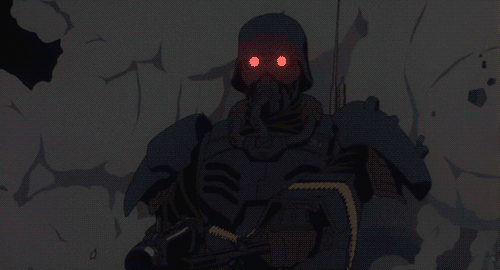
Meanwhile, as far as Kerberos, I admit I don’t know a great deal about this one. The series comprises a trilogy of films, two live action and finally one animated in Jin-Roh, which is the best-known of the series. The second you see the armour on the cover you know it’s about fascism lol. Beginning as a manga and spreading to Japanese and Korean film, anime, and a bunch of other media including even fucking... monographs (???), it’s set in a grim alternate 1950s, in which different branches of the state’s violent apparatus conflict with each other as well as the insurrectionary ‘Sect’. The background is surely the real political turmoil of that time, epitomised by events like the assassination of communist political figure Inejirō Asanuma by an ultranationalist with a sword.
For our purposes, the one that gets the most attention is the third film, Jin-Roh: The Wolf Brigade (1999), and the first to be made as anime - though it was actually remade as a Korean live-action film a couple of years ago. The film concerns a member of the Kerberos division (the guys in the SS-looking armour) who is put on trial after he hesitates to kill a girl carrying an IED, only to come into contact with someone who is allegedly her older sister after her release. The story is framed through Little Red Riding Hood; if you ask random youtube video essays I found, it does so in order to complicate an overly simple victim/villain binary but idk that might just be that guy’s take (for my part, it seems pretty obvious that the guys in nazi armour are the bad guys and it’s probably good to blow them up).
I won’t be screening this tonight bc, ngl, no matter how gorgeously it’s shot and animated, the heavy fash imagery makes me uneasy and I want to see what it’s doing with it!
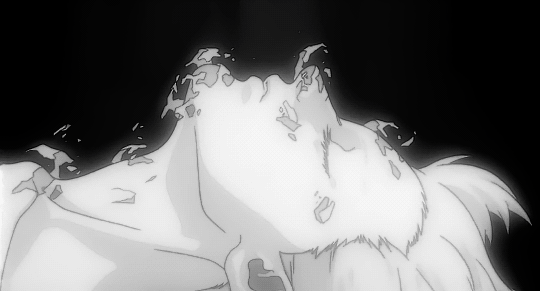
Oh yeah, and in between making Patlabor 2 and Jin-Roh, Oshii did a little number called Ghost in the Shell. More on that next week! But GitS is notable for many things: meticulous direction, stunning imagery (Production IG absolutely killing it on the animation front), and overall effectively distilling Shirow’s chaotic manga down to Oshii’s preferred philosophical themes. It’s no surprise that it’s the film that got him international recognition.

In the 2000s, Oshii went back to live action, directing a fascinating-sounding movie called Avalon about a VR game in 2001, followed by the psychedelic Assault Girls in 2009 (which I’ve heard good things about from @velocityvsreality who is far more familiar with the tokusatsu world!) He also played around with CG imagery, as in Mezame no Hakabune/Open Your Mind (2005), which was a sequence of psychedlic visuals set to Kenji Kawai’s fantastic music that played in iMax theatres. Like much of Oshii’s films, it’s concerned with evolution, there are military themes, it puts striking imagery above all else... it’s a cool watch.
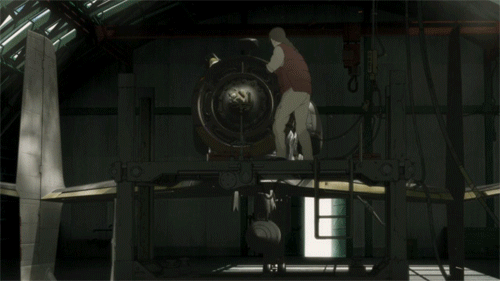
In terms of anime, though! He made a sequel to GitS, titled Innocence, which was sadly not all that successful. In 2009, though, he started on another original story: The Sky Crawlers, depicting a world in which strangely emotionless clone children fly WWII-like aeroplanes as a sublimated form of war. As with many of Oshii’s films, it’s slow and contemplative, meticulous with tech... it has, sadly, been years since I watched this film so I can’t immediately summarise what it does with the theme, but I still remember it as creating a striking mood that stayed with me after the film.
The last decade has seen Oshii return once more to live action, working in scifi films and suspense thrillers, but I am running out of time to research these! But he is actually coming back to anime sometime presumably very soon, with the series Vladlove (a name that is palindromic when transliterated into Japanese) being announced as a kind of... yuri vampire comedy??? Definitely not something I expected given Oshii’s filmmaking habits so far, but I’m sure it’s gonna be one to watch!

We have 15 minutes left for this Animation Night to commence at 7pm UK time, though I’ll probably leave it a little late so I can scribble out a title card. The place will be twitch.tv/canmom as usual! Hope to see you there, Oshii is a master of imagery and atmosphere and will surely give us lots to discuss!
Playlist is gonna be:
Mezame no Hakabune (while people are coming in and I draw a title card ><)
Angel’s Egg
Patlabor 2
The Sky Crawlers
(and next week, more Oshii with GitS night!! want to make that one really special)
#animation night#mamoru oshii#really feel like this one could be more substantial engagement with oshii's themes but maybe that's better saved for afterwards
13 notes
·
View notes
Photo

Ghost in the Shell will be released on 4K Ultra HD (with Blu-ray and Digital) on September 8 via Lionsgate. Martin Ansin designed the cover art for the influential 1995 Japanese anime film.
Best Buy will exclusively carry a Steelbook edition, which includes a slipcover, featuring artwork by Orlando Arocena (pictured below). It’s available to pre-order for $19.99.
Celebrating its 25th anniversary, the cyberpunk anime is directed by Mamoru Oshii (Avalon, Angel's Egg) and written by Kazunori Itō (Gamera: Guardian of the Universe), based on Masamune Shirow's manga of the same name. Atsuko Tanaka, Akio Ōtsuka, and Iemasa Kayumi star.
Ghost in the Shell has been newly mastered in 4K with Dolby Vision and features Japanese and English Dolby Atmos audio tracks, plus Japanese 2.0 LPCM audio and English descriptive audio.
Read on for the special features, Steelbook artwork, and trailer.
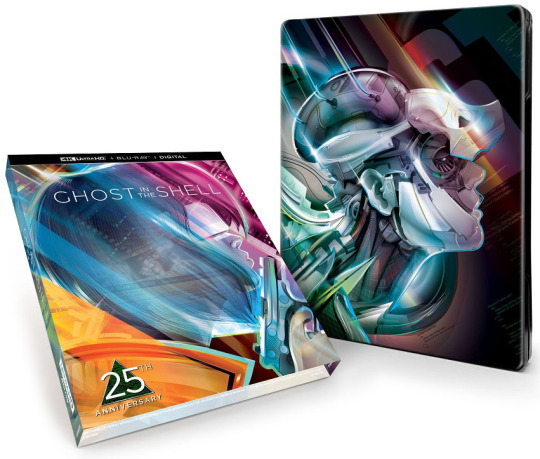
Special features:
Audio commentary with English dub scriptwriter Mary Claypool, animation producer/writer Eric Calderon, voice actor Richard Epcar, and animation historian Charles Solomon
Accessing Section 9: 25 Years into the Future featurette (new)
Landscapes & Dreamscapes: The Art and Architecture of Ghost in the Shell Featurette (new)
Production Report & Digital Works featurette
Theatrical trailer
youtube
2029: A female cybernetic government agent, Major Motoko Kusanagi, and the Internal Bureau of Investigations are hot on the trail of "The Puppet Master," a mysterious and threatening computer virus capable of infiltrating human hosts. Together with her fellow agents from Section 9, Kusanagi embarks on a high-tech race against time to capture the omnipresent entity.
#ghost in the shell#mamoru oshii#masamune shirow#anime#steelbook#dvd#gift#lionsgate#martin ansin#orlando arocena#manga#atsuko tanaka#akio otsuka#richard epcar#cyberpunk#japanese film
25 notes
·
View notes
Video
youtube
Ghost in the Shell (known in Japan as Mobile Armored Riot Police: Ghost in the Shell (攻殻機動隊 GHOST IN THE SHELL Kōkaku Kidōtai Gōsuto In Za Sheru)) is a 1995 anime science fiction film based on the manga of the same name by Masamune Shirow. It was written by Kazunori Itō and directed by Mamoru Oshii, and stars the voices of Atsuko Tanaka, Akio Ōtsuka, and Iemasa Kayumi.
Song name: Making of Cyborg - Kenji Kawai
Lyrics (日本語, Rōmaji, English)
吾が舞へば、麗し女、酔ひにけり
A ga maeba, kuwashime yoinikeri
Because I had danced, the beautiful lady was enchanted
吾が舞へば、照る月、響むなり
A ga maeba, terutsuki toyomunari
Because I had danced, the shining moon echoed
結婚に、神、天下りて
Yobai ni, kami amakudarite
Proposing marriage, the god shall descend
夜は明け、鵺鳥、鳴く
Yo wa ake, nuedori naku
The night clears away and the chimera bird will sing
1 note
·
View note
Text
Urusei Yatsura Season 2 Episode 12: Happy Birthday My Darling
Written by Kazunori Itō
Storyboard by Tamiko Kojima
Directed by Norio Kashima
Animation directed by Asami Endo

2 notes
·
View notes
Photo

Cover art of the 1980 first tankōbon volume featuring lead characters:
Ataru Moroboshi
and
Lum Invader
うる星やつら
Genre
Romantic comedy,science fiction[1]
Manga
Written by
Rumiko Takahashi
Published by
Shogakukan
Viz Media
Demographic
Shōnen MagazineWeekly
Shōnen Sunday
Original run
1978 – 1987
Volumes 34
Anime television series
Directed by
Mamoru Oshii
(1–106)
Kazuo Yamazaki
(107–195)
Written by
Takao Koyama
(1–54)
Kazunori Itō
(55–106)
Michiru Shimada
(107–195)
Music by
Fumitaka Anzai
Katsu Hoshi
Shinsuke Kazato
Studio Kitty Films
(production)
Pierrot
(1–106)
Studio Deen
(107–195)
AnimEigo
Anime Projects
Original network
FNS (Fuji TV)
English network
IN
Animax
SEA
Animax
US
AZN Television
Original run
October 14, 1981 –March 19, 1986
Episodes: 195
See also
Urusei Yatsura (film series)
Urusei Yatsura (OVA series)
Anime and Manga portal
1 note
·
View note
Text
Great Adaptations: Why Ghost in the Shell Doesn’t Have One
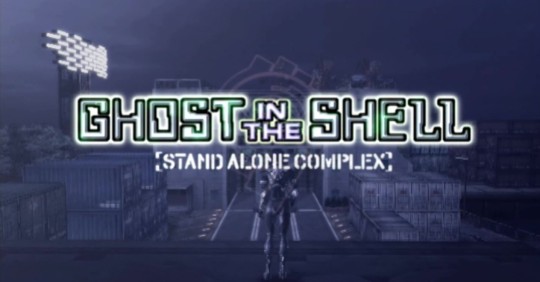
Before I say anything else, the things I say about Ghost in the Shell here assume a little bit of knowledge about the franchise. While I would have loved to have gone in depth on some of the things I mention, I don’t see a way to do that right now without, essentially, spending several years doing so. I’ve wanted to write about this topic, in some form or other, for a long time, and this is finally something I’ve been able to put down without getting lost in a fog.
It’s taken me a long time to write about Ghost in the Shell. Mostly, it’s because I didn’t know where to begin or which specific angle to write from. We’re talking about a multimedia property that began as a manga series in 1991 that grew to see tons of subsequent material in the form of more manga, animated films, and video games that continue to be put out to this day. The video game aspect was what had always been on my mind, but the question that has been bothering me all this time really only became clear recently. Why isn’t there a great Ghost in the Shell game?
Okay, that’s a bit of a loaded question. There are, actually, a couple pretty good Ghost in the Shell games. One of those is for the Sony PlayStation, which takes the form of an action shooter where the player acts as the pilot (or is it driver) of a Fuchikoma. Aesthetically, it absolutely nails the feeling of its parent franchise. The second is also an action shooter for the PlayStation 2, which does let the player control the series’ protagonist, Major Motoko Kusanagi, as well as a handful of other members of her team. They aren’t spectacular games, but they do have some solid mechanics, and in the case of Stand Alone Complex for the PS2, there’s a wholly original story to delve into accompanied by some solid animation from Production I.G, the studio responsible for every animated adaptation of the series. The real issues I take with all the games is that they don’t truly capture the spirit of Ghost in the Shell.

This brings me to the point where I have to grapple with just how big a beast the franchise really is. My feeling about the lack of a great game representing the spirit of Masamune Shirow’s work is because when I think of Ghost in the Shell, I’m very specifically thinking about the 1995 animated film. It turns out that the1995 film is actually something of an outlier for the franchise. Written by Kazunori Itō and directed by Mamoru Oshii, the film is something of an amalgamation of a few different story lines taken from the manga source material. Despite something of a cobbled together story, the film managed to do something that the manga never really did: give the main character a convincing internal motivation before the story’s climax.
I recall Ghost in the Shell being sold as an action-packed, violent, “adult” story. The truth of the matter is the film is not really an action film at all. There are exactly three action set-pieces over the course of the hour and twenty-three minute run time. Those action sequences don’t really play out much like action sequences, either. They don’t feature bombastic or heroic music. Kusanagi is literally invisible or, at best, translucent while she fights. For the time she is visible in a combat situation, she hides herself behind the cover, waiting until a safe opening before donning her invisibility cloak again. We know so little about the adversaries in these scenarios that there’s no feeling of triumph upon the Major’s victories. It’s almost an anti-action movie. That seems to fly in the face of a lot of the other Ghost in the Shell material, if not most of it.
To me, this is why no existing Ghost in the Shell game is really great. Action games need to have action in them, legitimately. But by conforming to the standards of action titles, the core identity of Ghost in the Shell is completely lost. There’s just no room to explore the conflict that Kusanagi feels about being compelled to work for an organization that has given her the cybernetic body she enjoys and requires to live her life. There’s no clear-cut way to frame what violence takes place without taking control the player’s control away.
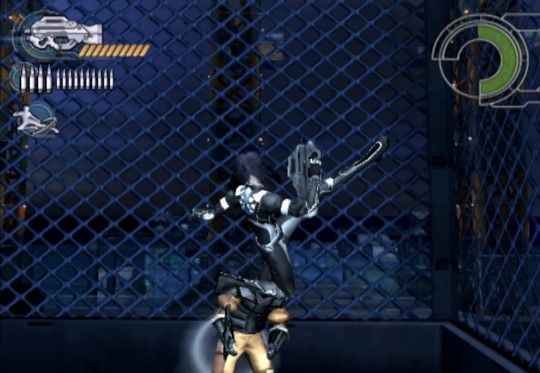
I might be in the minority in how I view the series, preferring the more “realistic” representation of the world and its inhabitants that the film took on. I am perplexed and intrigued by a Motoko Kusanagi that decides to merge with an AI as a result of her own existential crisis rather than being compelled to do so to avoid being prosecuted as a killer after being caught in the act.
Maybe most fans would be perfectly happy with something like a Metal Gear Solid game, just set in the Ghost in the Shell universe (hell, at this point I’d take that myself). Also, maybe most fans take no issue at all with an out and out action game. The Stand Alone Complex series seems to be the pinnacle for many fans out there, and it focused much more on the action, the technobabble that sounds more interesting than it really is, and of course, making Kusanagi look as sexually appealing as possible.
There are just so many of those kinds of games already, and almost none that explore the things that the 1995 film does because they aren’t the same kind of story. If a great Ghost in the Shell story is not, at its heart, an action story, then a great Ghost in the Shell game also couldn’t be an action game. Unfortunately, I don’t know what kind of game it would be. I’m not sure that there is such a thing as an anti-action game, but I do hope one day we find out.
0 notes
Text
Ghost in the Shell

Directed by Mamoru Oshii
Produced by Yoshimasa Mizuo Ken Matsumoto
Ken Iyadomi Mitsuhisa Ishikawa
Screenplay by Kazunori Itō
In 2029, with the advance of cybernetic technology, the human body can be "augmented" or even completely replaced with cybernetic parts. Another significant achievement is the cyberbrain, a mechanical casing for the human brain that allows access to the Internet and other networks. An often-mentioned term is "ghost", referring to the consciousness inhabiting the body (the "shell"). Wiki
6 notes
·
View notes